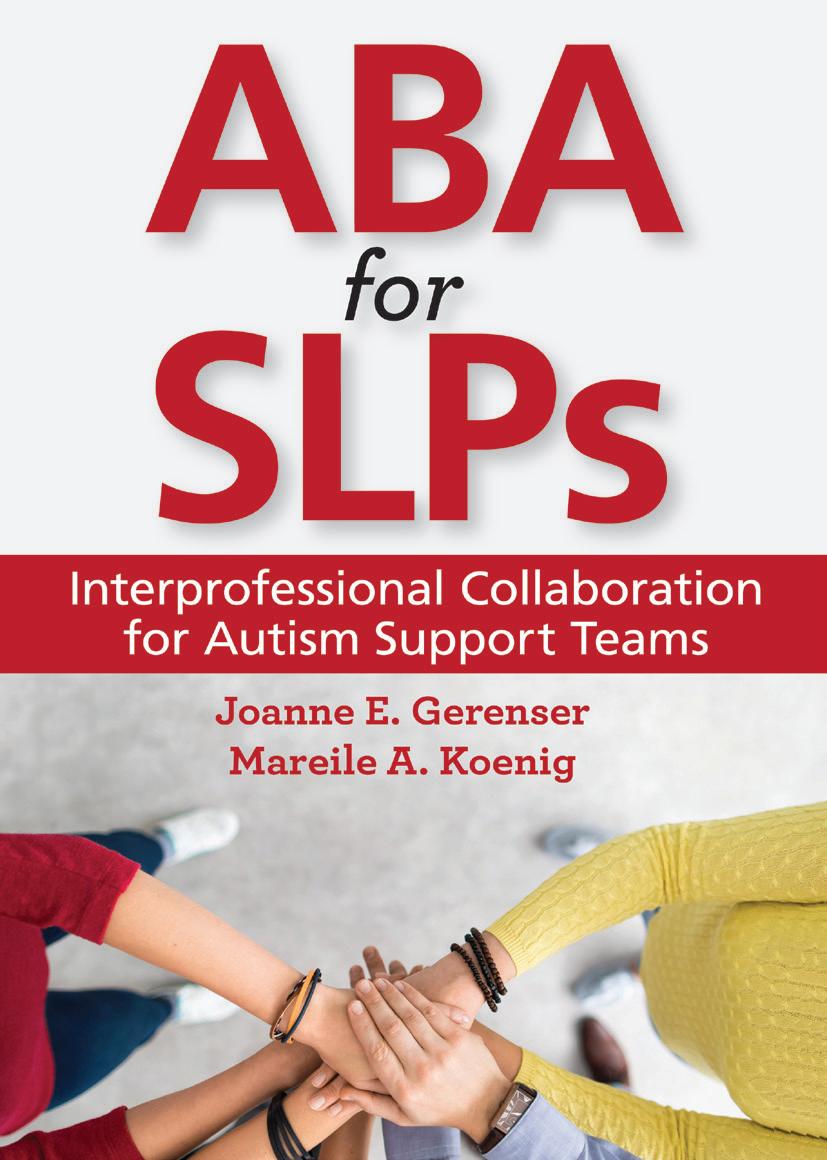
2 minute read
Visual Impairment

ORDER EXAM COPY

CONTENTS
I. INTRODUCTION AND OVERVIEW OF APPLIED BEHAVIOR ANALYSIS 1 . Interprofessional Collaboration 2. What Is Applied Behavior Analysis? 3. Components of Behavioral Teaching 4. Data Collection II. APPLICATIONS OF ABA WITHIN PROGRAMS FOR INDIVIDUALS WITH ASD 5. The Lovaas Model of ABA 6. Pivotal Response Treatment 7. Incidental Teaching 8. Verbal Behavior 9. A Guide to the Early Start Denver Model 10. Precision Teaching and Fluency 11 . A Guide to the Picture Exchange Communication System III. INTEGRATING ABA AND SLP FOR SUCCESSFUL INTERVENTION 12. Integrating Behavior Analytic Concepts with Communication Interventions: ABA Terms Demystified 13. Assessment in SLP and ABA 14. Behavioral Objectives that Guide Effective Intervention 15. Assessing and Treating Challenging Behavior Within and Beyond Speech Therapy 16. Strategies to Enhance SLP–ABA Collaboration: Working Toward Interprofessional Practice
ABA for SLPs Interprofessional Collaboration for Autism Support Teams
Edited by Joanne E. Gerenser, Ph.D. (The Eden II Programs), & Mareile A. Koenig, Ph.D., CCC-SLP, BCBA (West Chester University)
To help ensure the best outcomes for learners with autism spectrum disorder, speech-language pathologists (SLPs) and behavior analysts (BAs) need to work together to support positive behavior and effective communication. This book provides tomorrow’s SLPs with a clearer understanding of applied behavior analysis (ABA)—and bridges the gap between the two fields with a comprehensive plan for collaboration.


An important new addition to courses in speech-language pathology, this textbook clears up the myths and misconceptions surrounding ABA and builds a clear path to interprofessional practice between SLPs and BAs. Through chapters coauthored by practitioners from both disciplines, future SLPs will learn how to move past ABA stereotypes and controversies, incorporate the best ABA-based practices into their work, and break down the barriers to productive collaboration with BAs. An essential part of every preservice SLP’s education, this timely text shows how experts from two vital fields can learn from each other and work as a seamless team to support better lives for people with autism.
YOUR STUDENTS WILL: • Discover why SLPs should collaborate with behavior analysts— and get practical strategies for connecting with BAs and learning from their expertise • Master the fundamentals of ABA, including its key terminology, its core behavioral teaching components, and its data collection methods • Learn how to apply the interprofessional education and interprofessional practice model (IPE/IPP)—a framework widely used in health care and education—to collaboration with BAs • Get step-by-step guidance on using proven ABA-based interventions, including the analysis of verbal behavior, Pivotal Response Treatment, Incidental Teaching, and the Picture Exchange Communication System • Learn how to integrate ABA with speech-language pathology in critical areas, including assessment, goal-setting, and behavior intervention STUDENT-FRIENDLY FEATURES: Learning objectives, reflection questions, vignettes, and a helpful glossary make it easy for SLPs to absorb and apply new terminology and strategies.




